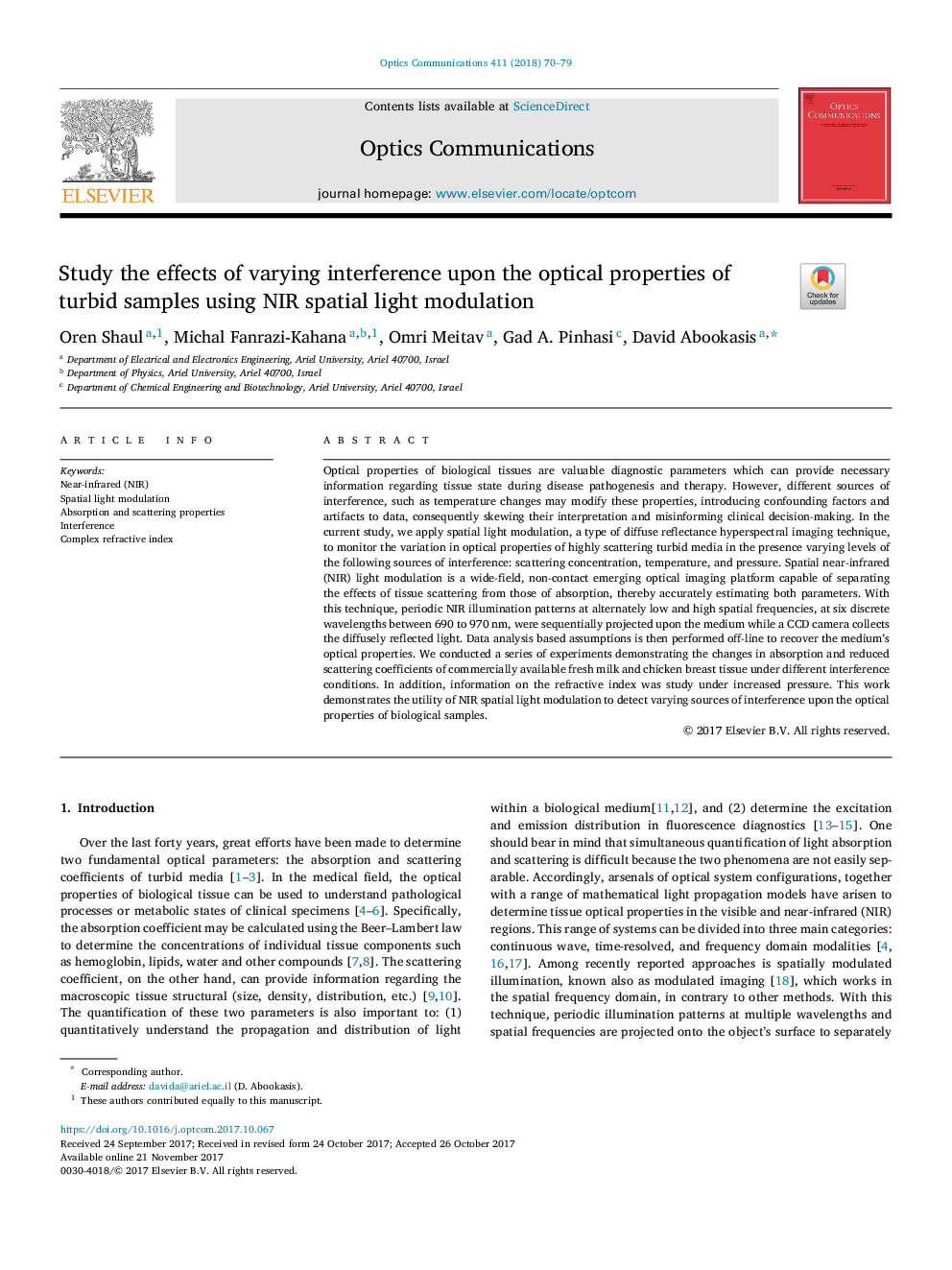| Article ID | Journal | Published Year | Pages | File Type |
|---|---|---|---|---|
| 7926061 | Optics Communications | 2018 | 10 Pages |
Abstract
Optical properties of biological tissues are valuable diagnostic parameters which can provide necessary information regarding tissue state during disease pathogenesis and therapy. However, different sources of interference, such as temperature changes may modify these properties, introducing confounding factors and artifacts to data, consequently skewing their interpretation and misinforming clinical decision-making. In the current study, we apply spatial light modulation, a type of diffuse reflectance hyperspectral imaging technique, to monitor the variation in optical properties of highly scattering turbid media in the presence varying levels of the following sources of interference: scattering concentration, temperature, and pressure. Spatial near-infrared (NIR) light modulation is a wide-field, non-contact emerging optical imaging platform capable of separating the effects of tissue scattering from those of absorption, thereby accurately estimating both parameters. With this technique, periodic NIR illumination patterns at alternately low and high spatial frequencies, at six discrete wavelengths between 690 to 970 nm, were sequentially projected upon the medium while a CCD camera collects the diffusely reflected light. Data analysis based assumptions is then performed off-line to recover the medium's optical properties. We conducted a series of experiments demonstrating the changes in absorption and reduced scattering coefficients of commercially available fresh milk and chicken breast tissue under different interference conditions. In addition, information on the refractive index was study under increased pressure. This work demonstrates the utility of NIR spatial light modulation to detect varying sources of interference upon the optical properties of biological samples.
Related Topics
Physical Sciences and Engineering
Materials Science
Electronic, Optical and Magnetic Materials
Authors
Oren Shaul, Michal Fanrazi-Kahana, Omri Meitav, Gad A. Pinhasi, David Abookasis,
